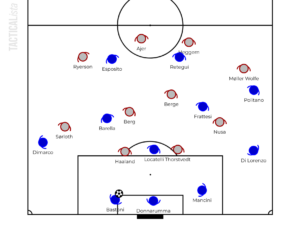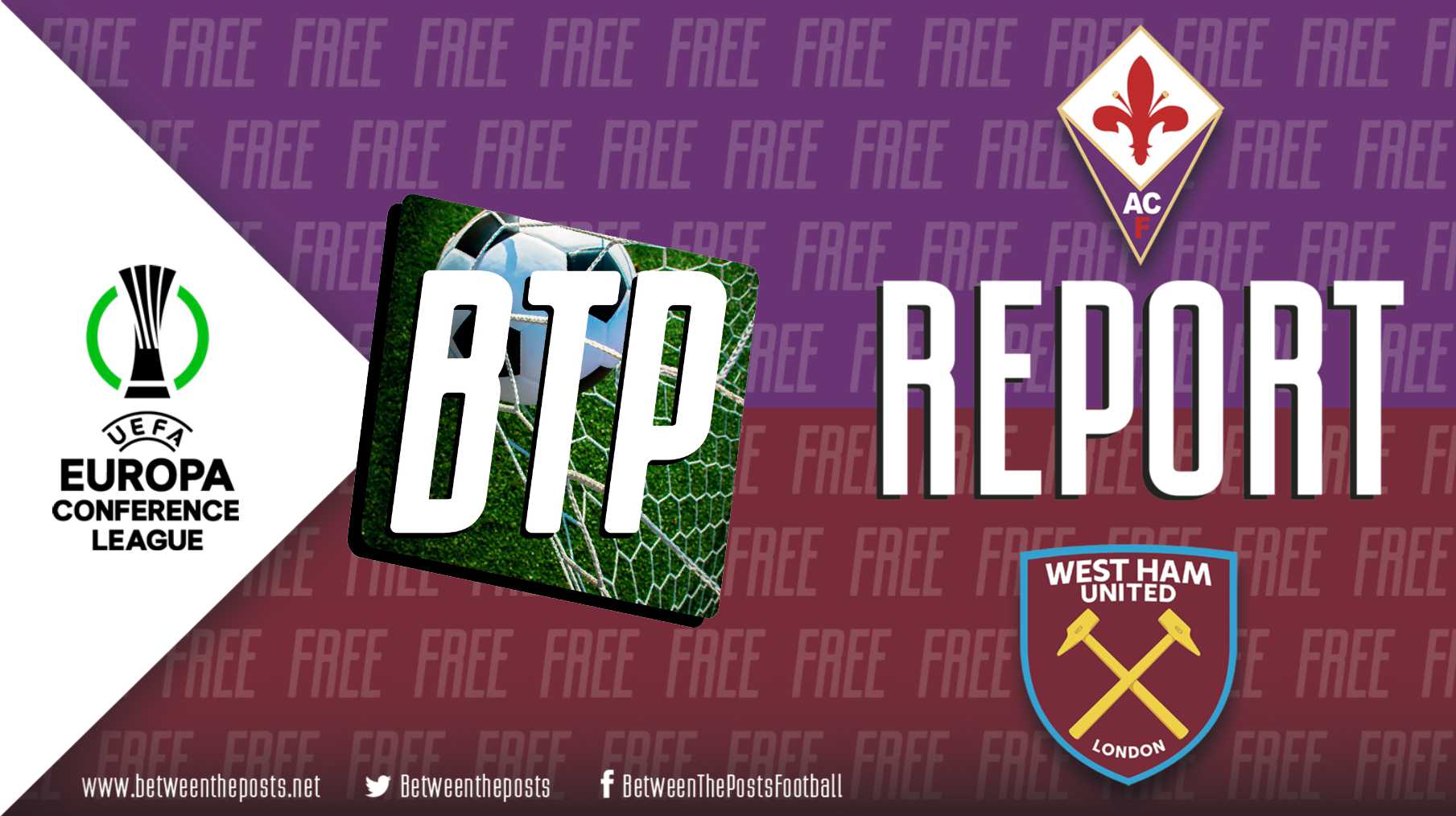Italy – Norway: Haaland’s One-Two Punch (1-4)
Italy scored early and seemed in control in their 3-5-2 system against a passive Norway press. However, Norway became more aggressive in the second half and gained momentum against a fading Italy side, before Erling Haaland left Italy reeling with two goals in two minutes.
Tactical analysis and match report by Josh Manley.
We decided to make this article free to read. If you want to support our work, consider taking a subscription.
These two sides topped World Cup Qualifying Group I coming into this game, with Norway almost certain to take top spot given their goal difference. Erling Haaland and co. have averaged over four goals per game in this qualifying campaign while also keeping things solid defensively. Italy are therefore likely to face a play-off match in March in a bid to end their two-tournament absence from the FIFA World Cup.
Gennaro Gattuso lined his side up in a 3-5-2 shape for this game, with Giovanni Di Lorenzo, Gianluca Mancini, and Alessandro Bastoni in the back three while Matteo Politano and Federico Dimarco were deployed at wing-back. Manuel Locatelli anchored the midfield with Davide Frattesi and Nicolò Barella ahead of him. Mateo Retegui then partnered Pio Esposito up front.
Norway started in a 4-3-3 formation meanwhile, with a back four of Julian Ryerson, Kristoffer Ajer, Torbjørn Heggem, and David Møller Wolfe. The midfield trio was made up of Sander Berge, Patrick Berg, and Kristian Thorstvedt. Alexander Sørloth and Antonio Nusa then flanked Haaland up front.
Norway’s passive pressing
Italy were able to take the lead in this game just after the ten-minute mark as Esposito fired home from inside the box. It stemmed from Ryerson’s inability to clear a long diagonal pass from Locatelli towards Dimarco, which allowed the Italian left wing-back to pounce and assist Esposito.
These switches of play were an issue for Norway in the first half as Italy made good use of their wing-backs’ ability to stretch the width when attacking in their 3-5-2 system. Ståle Solbakken’s side were defending in a relatively narrow 4-3-3 shape which generally did a good job of keeping the midfield compact, so Italy elected to take advantage of the wide areas.
Norway’s pressing in this 4-3-3 formation was relatively passive in the first half, and they sometimes dropped off into 4-5-1 arrangements, or temporary 4-4-2 shapes too in their mid-low block. Sørloth liked to try and jump onto Italy’s left center back, while Nusa on the other side tended to be a bit more passive and often allowed Thorstvedt to jump forward alongside Haaland instead of going forward himself.

Italy building up against Norway’s first-half defensive scheme.
Italy could occasionally go into a back four in possession, as Di Lorenzo could temporarily pull wider and act as a right back. Their number eights Frattesi and Barella often took quite high positions when they had the ball, which helped pin Norway’s midfield back. It also made it harder for Norway’s fullbacks to defend against Italy’s wing-backs in wide areas when Frattesi and Barella would make diagonal runs into the channels behind them.
Overall, the first half of this game was relatively comfortable for Italy due to Norway’s inability to put pressure on their possession phases, allowing the home side to dictate the play and attack by moving the ball into the wide areas at the right time.
Norway’s directness
When Norway had the ball, they often preferred to take a more direct approach, with the long balls towards Sørloth being a common ploy with Haaland making forward runs off of him to try and receive the flick-on.
Italy’s pressing made it hard for Norway to put many passes together in their buildup in the first half. Italy’s pressing started in a 5-3-2 shape, but Dimarco would make it a back four by pushing up aggressively from his left wing-back position to pressure Ryerson. Frattesi would push out to right midfield positions when Italy needed to pressure the ball on that side, as Politano often stayed back with Nusa.
The two Italy strikers would begin by positioning themselves to cut off passes into Berge in Norway’s number six position, but would then pressure the two Norway center-backs directly as soon as it was appropriate, and they were able to force Norway to rush their long balls into the frontline.

Italy’s first-half pressing.
In the second half though, Italy became less aggressive in their pressing from their mid-block, with Dimarco jumping forward less often and instead leaving the number eights Frattesi and Barella to cover the midfield width.
Norway were able to make their long passes stick more often, as well as having time to play some more constructive buildup phases at times as well. They were able to equalize just after the hour mark through Nusa, and they didn’t stop there.
High pressing and momentum
Another key change to the game in the second half was that Norway showed more intent to press Italy high, starting from their goal-kicks. Thorstvedt would push up to join Haaland on the edge of the Italy box, ready to pressure the Italy center-backs as the home side shifted into a back four for their deep buildup, with Di Lorenzo becoming a temporary fullback. Sørloth and Nusa covered Di Lorenzo and Dimarco in the wide areas, while Berg would try to mark players around Italy’s number six area, and Berge would sweep up behind him.

Norway’s second-half pressing against Italy’s goal-kicks.
Norway’s high pressing was not perfect but it helped them get more of a stake in the game and disrupted the control and territory that Italy had enjoyed in the first half. This built the platform for Norway to play more of the game in Italy’s half, where their presence in the box from crosses and set-pieces could become a threat.
Solbakken put fresh legs into his midfield as the second half went on, bringing Morten Thorsby and Thelo Aasgaard on for Berg and Thorstvedt. Oscar Bobb was also brought on for Sørloth to add creativity to the attack.
This change had the desired effect almost immediately, as Bobb’s floated cross was emphatically volleyed home by Haaland to put Norway 2-1 up with just over ten minutes remaining.
When play restarted after the goal, Norway continued to try and press high, and immediately forced a turnover which resulted in a second Haaland goal in as many minutes, making the score 3-1. Italy had collapsed, and Norway were even able to add a fourth goal before the final whistle to cap off an excellent World Cup qualifying campaign.

Takeaways
Italy looked decent enough in the first half, although they were not challenged too much by a passive Norway defensive scheme. They switched the play well and tried to create crossing situations with their two strikers plus two number eights in the box. In the second half though, their performance dropped off heavily, allowing Norway to gain momentum and ultimately they were punished by Haaland’s quality. They now face a crucial play-off tie in March.
Norway’s second-half performance gave more of a reflection of their capabilities, and they will be an interesting World Cup team next year that few opponents would enjoy facing. With their captain Martin Ødegaard still to return from injury, they boast some strong attacking talent. They can play in a direct manner and thrive off set-pieces while also defending compactly – traits which have often been seen in tournament football overachievers.
Use the arrows to scroll through all available match plots. Click to enlarge.
Check the match plots page for plots of other matches.




Comments